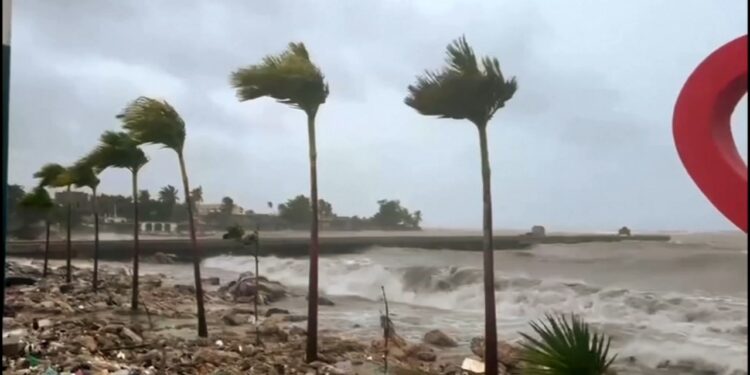Hurricane Melissa intensified overnight into a Category 4 system as it barrelled toward Jamaica on Tuesday, prompting mass evacuations and urgent warnings from authorities and humanitarian organisations. The Red Cross said up to 1.5 million people across the island could be affected by what it described as the “storm of the century”.
Evacuations and emergency response
The Jamaican government declared a national emergency late on Monday as the hurricane’s sustained winds reached nearly 240 km/h. Shelters were opened across all fourteen parishes, and coastal areas from Montego Bay to Kingston were ordered to evacuate. The Red Cross said it had pre-positioned supplies for more than 100 000 people, including water, food, and medical aid, but warned that infrastructure damage could severely hinder distribution once the storm makes landfall.
Prime Minister Andrew Holness urged residents to comply with evacuation orders, stressing that “this is not a storm to test or underestimate”. Military and rescue teams have been deployed to reinforce flood defences and assist vulnerable communities.
Meteorological outlook
The National Hurricane Centre (NHC) said Melissa was moving west-northwest at 20 km/h, with projections showing landfall near Jamaica’s southern coast late Tuesday or early Wednesday. Forecasters warned of catastrophic flooding, storm surges exceeding three metres, and widespread power outages. The hurricane could strengthen further before weakening slightly as it passes over the island and moves toward the Cayman Islands and Cuba later this week.
Regional impact
Neighbouring Caribbean nations, including Haiti and the Dominican Republic, have issued tropical-storm alerts amid fears of heavy rainfall and landslides. In the Cayman Islands, authorities have suspended flights and advised residents to prepare for hurricane-force winds within the next 48 hours. International aid agencies are coordinating contingency plans for post-storm relief and logistics support across the region.
Economic and infrastructure risks
Jamaica’s tourism and agricultural sectors are bracing for significant losses, with most hotels along the north and west coasts already closed. Power and telecommunications companies have begun shutdown procedures to prevent damage to their grids. Economists warned that recovery costs could exceed US $3 billion if the storm’s current intensity persists.
Global response
The United Nations Office for the Coordination of Humanitarian Affairs (OCHA) said it was monitoring the situation closely and preparing for an emergency deployment should the island’s infrastructure sustain major damage. The United States and several European nations have pledged to provide immediate assistance once the hurricane passes.
Newshub Editorial in Caribbean – 28 October 2025



Recent Comments